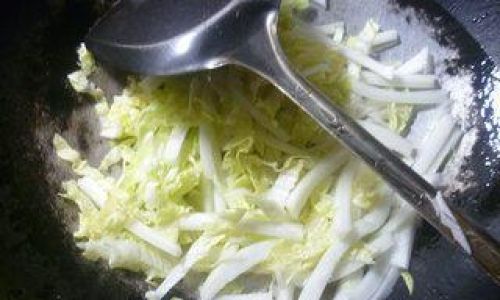Table of content
- Flour
- Sugar
- Fat
- Eggs
- Leavening Agents
- Flavorings and Add-Ins
- Reading Labels
- Checking Ingredients Lists
- Understanding Serving Sizes
- Considering Dietary Restrictions and Preferences
- Sponge Cakes
- Chiffon Cakes
- Angel Food Cakes
- Cheesecakes
- Fruit Cakes
- Chocolate Cakes
- Layer Cakes
- Dense Cakes (e.g., Pound Cakes)
- Store-Bought Cakes
- Homemade Cakes
- Use Whole Food Ingredients
- Experiment with Healthy Fats
- Balance Sweetness and Flavor
- Use Healthier Frostings and Fillings
- Bake and Cool Properly
- Decorate with Care
Introduction
Cakes have been a staple in celebrations and everyday indulgences for centuries. Whether it’s a birthday bash, a wedding reception, or simply a cozy evening at home, a slice of cake can elevate the mood and satisfy the sweet tooth. However, with the myriad of options available in bakeries, cafes, and even grocery stores, selecting a cake that is both healthy and delicious can seem like a daunting task. This guide aims to demystify the process and provide you with actionable tips to ensure your next cake purchase or homemade creation is a hit on both the taste buds and the health meter.

Understanding the Basics: Ingredients and Nutrition
Before diving into the specifics of how to pick a cake, it’s crucial to understand the fundamental components that make up a cake and their impact on health.
Flour
Flour is the backbone of any cake. Traditional cakes use all-purpose flour, which is high in refined carbohydrates and low in essential nutrients. For a healthier option, consider whole wheat flour, almond flour, or a blend of different flours that provide fiber and nutrients.
Sugar
Sugar is what gives cakes their sweet, addictive flavor. However, excessive sugar intake is linked to obesity, diabetes, and other health issues. Opt for cakes sweetened with natural alternatives like honey, maple syrup, or coconut sugar. These options are less processed and may offer trace nutrients. Additionally, some cakes use fruit purees or dates as natural sweeteners, adding a layer of complexity to the flavor profile.
Fat
Fat plays a vital role in cake texture, providing moisture and richness. Butter and shortening are common choices, but they are high in saturated fats. Healthier alternatives include coconut oil, olive oil, or avocado oil, which are rich in unsaturated fats. For vegan cakes, options like applesauce or mashed bananas can serve as fat substitutes.
Eggs
Eggs are essential for cake structure, providing binding and leavening properties. For vegan or cholesterol-conscious consumers, flaxseed meal or chia seeds mixed with water can be used as egg replacers. Aquafaba, the liquid from canned chickpeas, is another popular vegan egg substitute.
Leavening Agents
Baking powder and baking soda are used to make cakes rise. They are generally considered safe and do not significantly impact the nutritional profile of the cake.
Flavorings and Add-Ins
Vanilla extract, cocoa powder, spices, and extracts like almond or lavender can enhance the cake’s flavor without adding significant calories or unhealthy ingredients. For fillings and toppings, fresh fruits, nuts, and yogurt are healthier alternatives to buttercream and sugary glazes.
Identifying Healthy Cake Options
Now that you understand the basic ingredients, let’s delve into how to identify a healthy cake among the myriad of options available.
Reading Labels
When purchasing cakes from stores, always check the nutrition label. Look for cakes with lower sugar content, fewer artificial ingredients, and a balance of macronutrients (carbohydrates, proteins, and fats). Remember, just because a cake is labeled “healthy” doesn’t necessarily mean it is. Sometimes, manufacturers use healthier ingredients but add excessive sugars or fats to enhance flavor.
Checking Ingredients Lists
Ingredients are listed in order of their quantity, with the most abundant ingredient first. A healthy cake should have whole food ingredients listed at the top, such as whole wheat flour, nuts, fruits, or natural sweeteners. Avoid cakes with long lists of ingredients, especially those you can’t pronounce or recognize, as they often indicate processed or artificial additives.
Understanding Serving Sizes
Pay attention to serving sizes. Sometimes, a cake might seem healthier because the serving size is smaller than what you’re accustomed to. Adjust your portion accordingly to avoid overeating.
Considering Dietary Restrictions and Preferences
If you have dietary restrictions or preferences, such as being gluten-free, vegan, or diabetic, look for cakes that cater to these needs. Many bakeries now offer specialized cakes made with alternative ingredients that are both delicious and nutritious.
Choosing the Right Type of Cake
Different types of cakes offer varying nutritional profiles and flavors. Here are some popular options and their health benefits:
Sponge Cakes
Sponge cakes are light and airy, often made with just flour, sugar, eggs, and a leavening agent. They are lower in fat but can be high in sugar. Opt for versions sweetened with natural alternatives and filled with fresh fruit or yogurt.
Chiffon Cakes
Chiffon cakes are similar to sponge cakes but include vegetable oil, making them moist and tender. They are generally lower in saturated fats and can be a good option for those looking for a lighter cake.
Angel Food Cakes
Angel food cakes are made with egg whites, sugar, flour, and a leavening agent. They are low in fat and calories but high in protein, making them a good choice for those watching their weight.
Cheesecakes
Cheesecakes are rich and creamy, made with a blend of cream cheese, eggs, sugar, and a crust (usually graham crackers or cookies). They can be high in calories and fat. For a healthier version, look for cheesecakes made with low-fat cream cheese, natural sweeteners, and a whole grain crust.
Fruit Cakes
Fruit cakes are dense and packed with dried fruits, nuts, and spices. They can be high in calories but offer fiber, antioxidants, and essential nutrients. Opt for versions with minimal added sugar and no preservatives.

Chocolate Cakes
Chocolate cakes are a favorite among many, but they can be high in sugar and fat. Look for cakes made with dark chocolate, which has a higher antioxidant content, and use natural sweeteners to balance the bitterness.
Layer Cakes
Layer cakes can be any type of cake stacked with frosting and fillings. They are often high in calories, sugar, and fat. Choose cakes with healthier frostings like mascarpone, whipped cream, or fruit-based glazes, and fillings like jam or fresh fruit.
Dense Cakes (e.g., Pound Cakes)
Dense cakes like pound cakes are rich and buttery, made with a high ratio of butter to flour. They are high in calories and saturated fats. For a healthier twist, try cakes made with olive oil or coconut oil and filled with nut butters or fruit purees.
Homemade vs. Store-Bought: Making the Best Choice
While store-bought cakes offer convenience, homemade cakes allow you to control the ingredients and nutritional content. Here are some pros and cons of each option:
Store-Bought Cakes
Pros:
- Convenient and easy to purchase.
- Often professionally decorated and presented.
- Wide variety of flavors and styles to choose from.
Cons:
- May contain unhealthy ingredients like refined sugars, artificial additives, and hydrogenated oils.
- Limited control over portion sizes and nutritional content.
- Can be expensive.
Homemade Cakes
Pros:
- Complete control over ingredients and nutritional content.
- Can cater to dietary restrictions and preferences.
- Often more cost-effective.
Cons:
- Requires time and effort to prepare.
- May not have the same professional presentation as store-bought cakes.
- Can be challenging to achieve the perfect texture and flavor without experience.
Tips for Making a Healthy and Delicious Homemade Cake
If you decide to bake your own cake, here are some tips to ensure it’s both healthy and delicious:
Use Whole Food Ingredients
Opt for whole wheat flour, almond flour, or a combination of flours. Use natural sweeteners like honey, maple syrup, or coconut sugar. Incorporate fruits, nuts, and seeds for added nutrition and flavor.
Experiment with Healthy Fats
Use coconut oil, olive oil, or avocado oil instead of butter. These fats add moisture and richness without the saturated fats.
Balance Sweetness and Flavor
Natural sweeteners can sometimes have a stronger flavor than refined sugar. Balance their sweetness with acids like lemon juice or vinegar, and spices like cinnamon or nutmeg to create a complex flavor profile.
Use Healthier Frostings and Fillings
Swap traditional buttercream for mascarpone, whipped cream, or fruit-based glazes. Fill cakes with fresh fruit, nut butters, or yogurt for a nutritious twist.
Bake and Cool Properly
Follow recipes closely, ensuring accurate measurements and baking times. Proper cooling is crucial for achieving the right texture and flavor.
Decorate with Care
Use fresh fruits, nuts, and edible flowers for decoration. Avoid excessive use of sugary toppings or artificial decorations.
Conclusion
Choosing a healthy and delicious cake doesn’t have to be a compromise between taste and nutrition. By understanding the basic ingredients, reading labels, and considering dietary preferences, you can make informed choices that satisfy both your palate and your health goals. Whether you opt for a store-bought cake or bake one yourself, with the right ingredients and techniques, you can enjoy a cake that is not only indulgent but also nutritious. So, the next time you’re in the mood for a sweet treat, remember these tips and enjoy a cake that’





0 comments